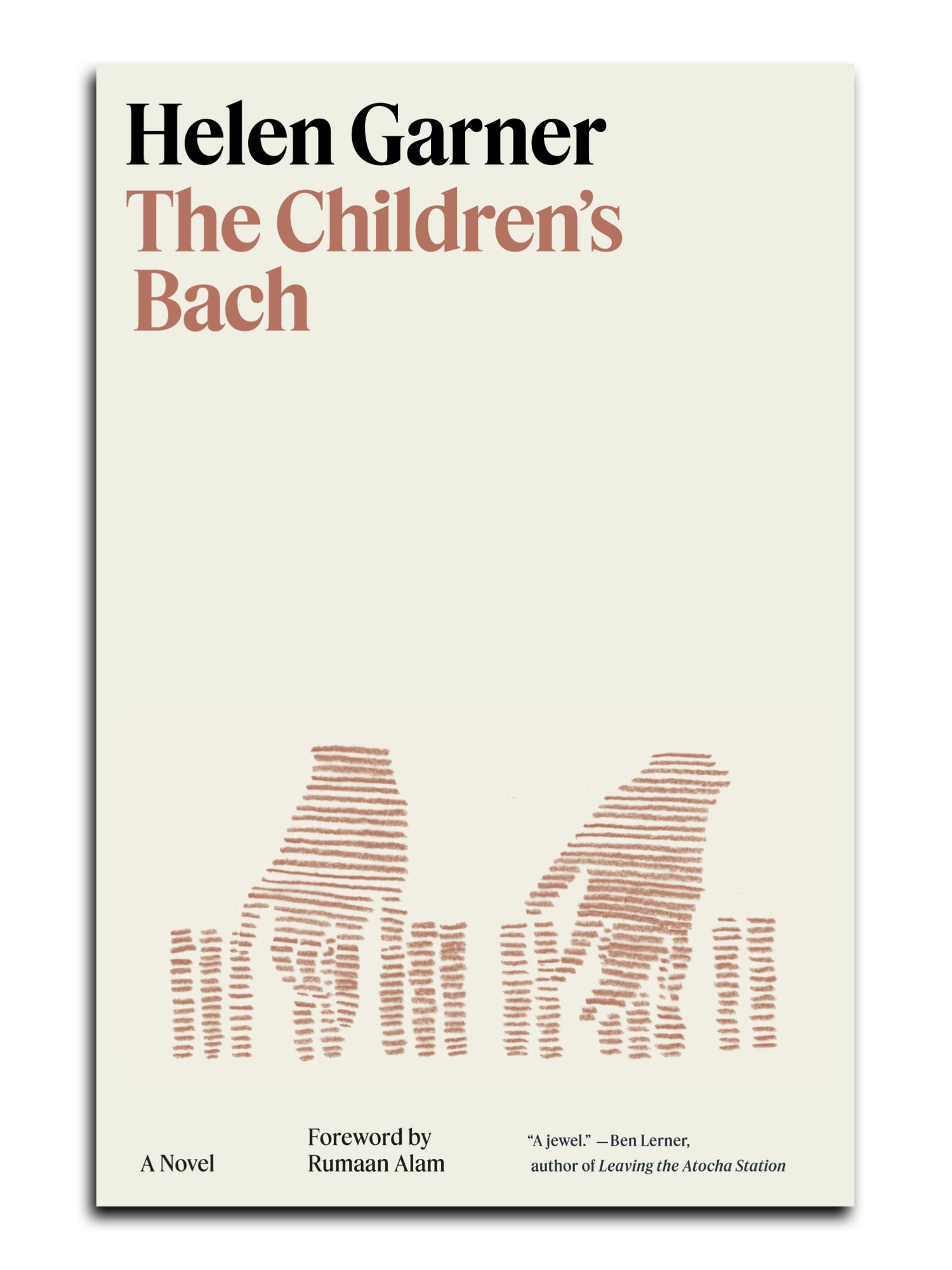The Children’s Bach by Helen Garner
Originally published in 1984, The Children's Bach covers a lot of ground for a slim volume. With the reprinting (featuring a foreword by author Rumaan Alam) comes a new generation and a new audience. And The Children's Bach feels very much a product of its time.
Garner presents her characters like figures coming down a runway, they are action and movement with a little description of them as they pass and repass before the next character's walk demands your eye. The very nature of trying to describe the small group peopling the novella feels gossipy — like Gladys Kravitz at her most calm describing the witchery she's witnessed. Athena and Dexter are a married couple with two small kids living in Melbourne. Dexter being some version of chaotic stasis and Athena being the more malleable — either through direct willingness or a relinquishing of herself to the current. As outside forces break into their world, the pair are drawn into the world happening outside their small, contained bubble, impacting their ideals and relationship.
Part of the invasion from the outside is an old college friend of Dexter's named Elizabeth and her younger sister Vicki. Elizabeth randomly bumps into Dexter while he's out eating with his father and younger son who is mentally disabled in some way that is never clearly defined by today's standards. This is actually the area of the story that suffers the most from the current way of addressing the disabled, particularly children. The are some startlingly harsh comments made in a very offhand way about the child and his capabilities. I found it really off-putting and distracting. Despite the fact that the story focuses a good deal on how he can mainly only be reached through music, as he's nonverbal and far from neurotypical, the language used in the narrative and by the characters is dated at best and disgusting at worst.
Into Dexter's carefully contained life with Athena and their two sons, comes Elizabeth, her sister Vicki, and Elizabeth's no-good-but-still-good musician boyfriend Philip — and into the mix on occasion is Philip's pre-teen daughter, Poppy. Chaos and disruption ensue. An interesting point is that, while you'd think Elizabeth would be a main agitator to their seemingly happy married life, she proves to be just a side note and the bringer of the real turmoil as Vicki and Philip arrive in her wake.
It's difficult to pull the main themes and motifs from this work due to its style and delivery. The interwoven ideas with music at the heart of change, communication, and connection is an interesting idea, but suffers from a fenced-in narrative and rapid-fire scenes. The dialog in particular is incredibly choppy and disconnected in the staccato way Garner writes.
There's an almost dreamlike quality to the fuzzy way the events play out — like when you try and recount your dream, and you know it made sense when it was a dream, but you never quite knew how you got from Point A to Point B because in the dream, it just happened and it doesn't really matter. But in the relaying of the dream, you slowly realize it doesn't make sense — so you skim around until you get to the stuttering scenes of dialog that are most important.
In the narrative of such a short book, I wish the spaces between those moments had been better filled in and smoothed out. I do realize part of that distance was just the writing style at the time of its original publication and part is simply Garner's personal writing method, but the lack of breathing room and a concrete foundation hampered the characters' development on the page. While these characters were distinct and mostly well-developed, they could've had a bit more nuance to truly feel like fully-fleshed-out people.
I received this book for free from the publisher via NetGalley in exchange for an honest review. This affected neither my opinion of the book nor the content of my review.

